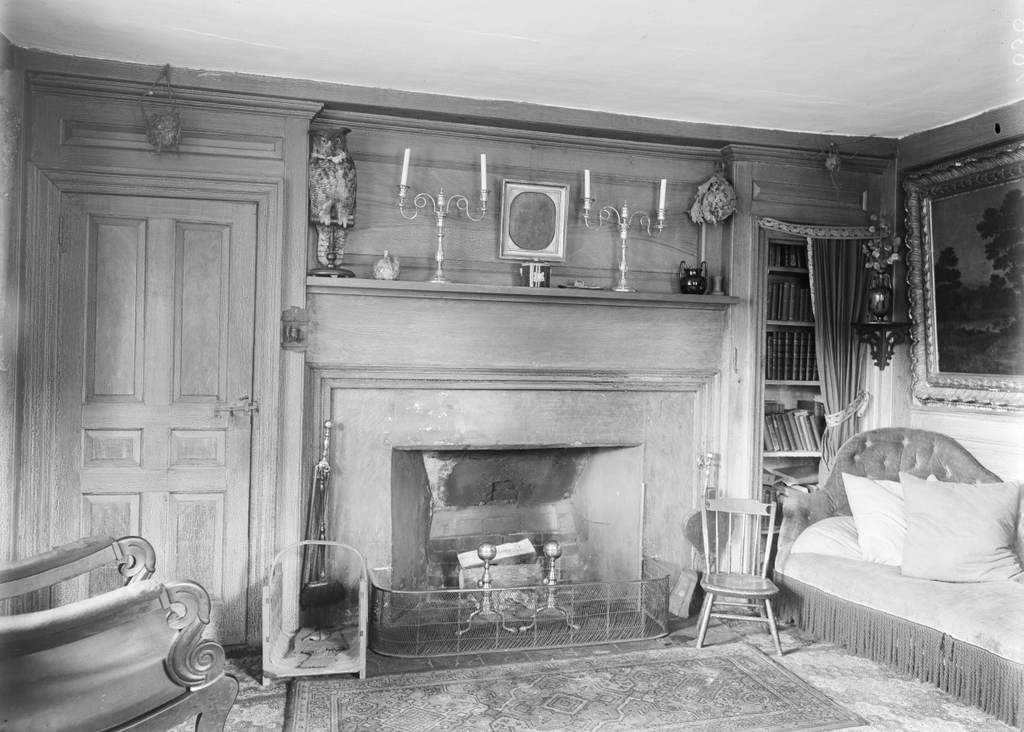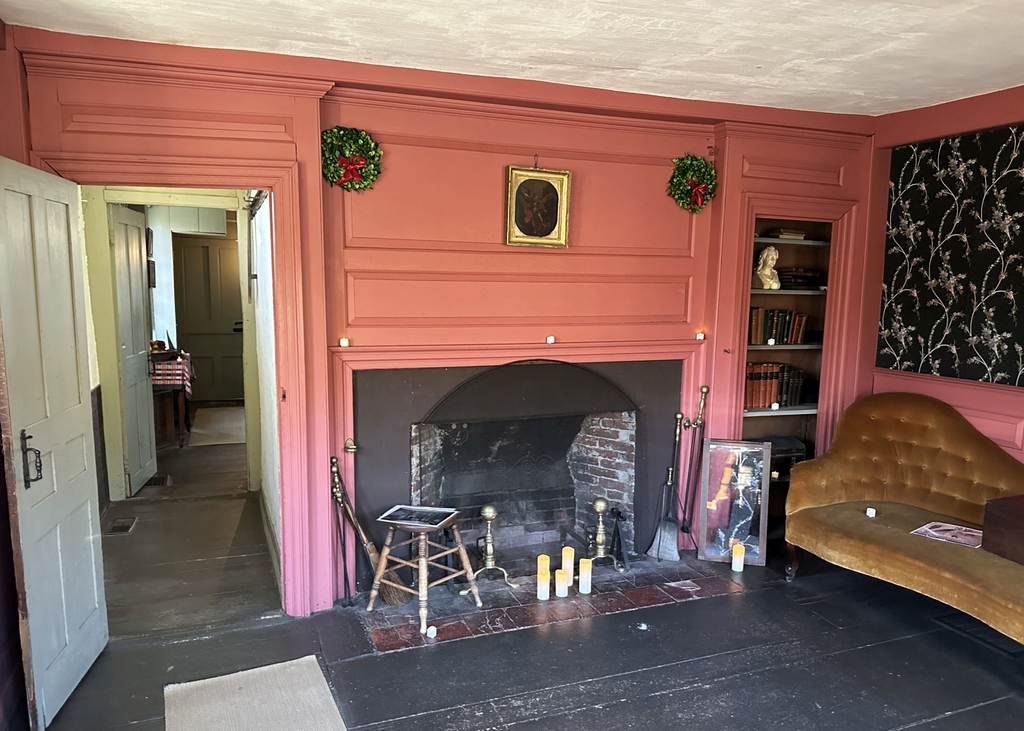The south parlor at the Old Manse in Concord, probably around 1890-1910. Image courtesy of the Phillips Library at the Peabody Essex Museum, Frank Cousins Glass Plate Negatives Collection.
The room in 2023:
These two photos show the south parlor at the Old Manse, a historic home that was built in 1770 as the home of the Reverend William Emerson and his wife Phebe Bliss Emerson. The house served as the parsonage, or “manse” for Emerson until his death in 1776, and it was subsequently the home of his successor, the Reverend Ezra Ripley, who married his widow Phebe in 1780.
However, the house is best remembered for its association with two prominent 19th century writers. Ralph Waldo Emerson, a grandson of William and Phebe, lived here from 1834 to 1835 and wrote one of his earliest works, the essay “Nature,” in his upstairs study here in the house. Then, from 1842 to 1845 the house was rented to Nathaniel Hawthorne, who lived here with his wife Sophia and their infant daughter Una.
The floor plan of the house is typical for late 18th century homes. It features a hallway and staircase in the center of the house, with parlors on either side of it on the ground floor. As was often the case, the north parlor was the more formal one, where its expensive furnishings would be better protected from sunlight, while the south parlor—shown here in these two photos—was a less formal space that would have been used by family members and close friends. This room has a door connecting it to the main hall, and it also has a door to the kitchen, as shown on the left side of these photos.
By the time the top photo was taken, the house was over a hundred years old and had become a famous landmark, thanks in part to the title of one of Nathaniel Hawthorne’s early works, Mosses from an Old Manse, which he wrote while living in the house. It was still owned by descendants of the Ripley family, and many of its furnishings dated back to when Emerson and Hawthorne lived here.
Perhaps the most famous object in the top photo is the stuffed owl on the mantle. According to legend, the owl was brought to the house by Harvard students after they fled Cambridge at the start of the American Revolution. Regardless of how it ended up here, though, Hawthorne discovered it in the attic when he moved in. He brought it downstairs to the parlor and named it “Longfellow” after his Bowdoin College classmate Henry Wadsworth Longfellow. Hawthorne’s wife Sophia was somewhat less enamored with the owl, and the family left it here when they moved out in 1845. The owl is still here in this room today, although it is now in the corner behind where these two photos were taken from.
The house was owned by Ripley descendants until 1939, when Ezra and Phebe’s great granddaughter Sarah Ames died. Her husband then donated the house and its contents to the Trustees of Reservations, which has owned and preserved the house ever since. The room was decorated for Christmas when the second photo was taken, but otherwise it does not look much different from when the top photo was taken. The house remains an important literary and historic landmark, and it is open to the public for guided tours.



Majestic classic American history.
Makes me very proud.
Hi Derek, I have a sneaking suspicion that Longfellow may have been an inspiration for May Alcott’s painting of an owl over Louisa’s hearth at Orchard House. (I know Emerson and Hawthorne were friends with the Alcotts.) See https://louisamayalcott.org/photo-gallery